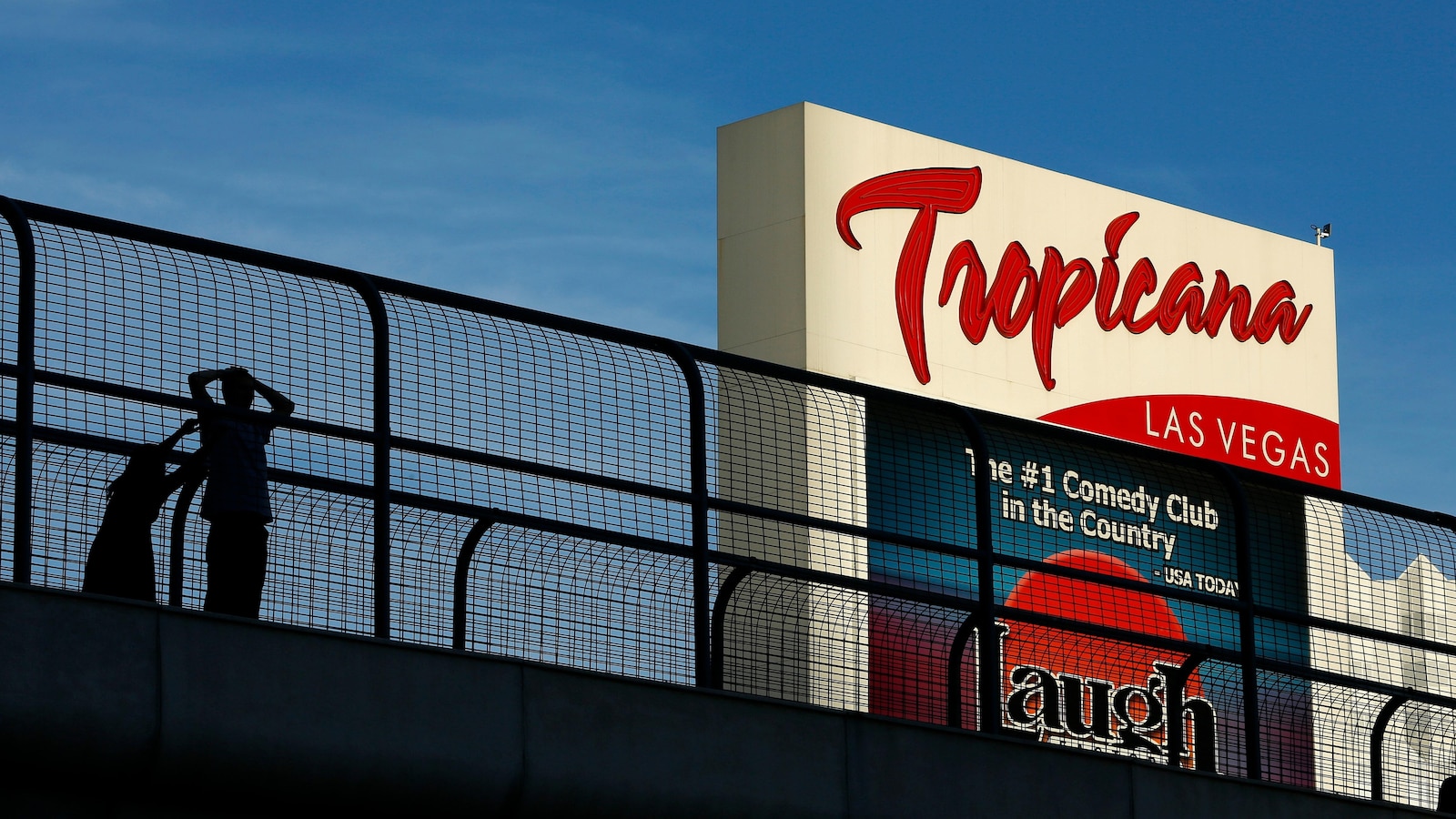Las Vegas, known for its vibrant nightlife and bustling streets, is implementing a new regulation that prohibits standing and stopping on pedestrian bridges along the famous Las Vegas Strip. This new rule aims to enhance pedestrian safety and improve the overall flow of foot traffic in this popular tourist destination.
The Las Vegas Strip, a stretch of Las Vegas Boulevard South, is lined with iconic hotels, casinos, and entertainment venues. It attracts millions of visitors each year, making it one of the busiest pedestrian areas in the world. However, the sheer number of people walking along the Strip often leads to congestion and bottlenecks, especially on pedestrian bridges.
These bridges, which connect various resorts and casinos, have become popular spots for tourists to stop and take photos or simply enjoy the view. While this may seem harmless, it often creates significant disruptions to the flow of pedestrian traffic. People stopping abruptly on the bridges can cause a domino effect, leading to congestion and delays for others trying to cross.
To address this issue, the Las Vegas City Council recently passed a new regulation that strictly prohibits standing and stopping on pedestrian bridges along the Strip. The rule will be enforced by increased police presence and fines for violators. The goal is to keep the bridges clear and ensure a smooth and safe experience for all pedestrians.
This regulation is part of a broader effort by the city to improve pedestrian safety. Las Vegas has been investing in infrastructure upgrades, including widening sidewalks and adding more crosswalks, to accommodate the growing number of visitors. However, these efforts can only go so far if people continue to obstruct the flow of foot traffic.
The decision to implement this new regulation was not taken lightly. City officials considered various options, including creating designated areas for photo opportunities or imposing time limits for standing on the bridges. However, after careful consideration, they concluded that a complete ban on standing and stopping was the most effective solution.
Critics argue that this regulation may discourage tourists from visiting the Strip, as they may feel rushed or unable to fully enjoy the experience. However, proponents argue that the benefits of improved pedestrian flow and safety outweigh any potential inconvenience. They believe that visitors will adapt to the new rule and find alternative ways to capture their memories without obstructing others.
To ensure that tourists are aware of the new regulation, the city plans to install signage on the bridges and distribute informational materials at hotels and popular tourist spots. Additionally, law enforcement officers will be present to educate pedestrians and enforce the rule.
Las Vegas is not the first city to implement such a regulation. Other popular tourist destinations, including New York City and Paris, have similar rules in place to maintain pedestrian flow and safety. These regulations have proven effective in reducing congestion and improving the overall experience for both locals and visitors.
In conclusion, the new regulation prohibiting standing and stopping on pedestrian bridges along the Las Vegas Strip is a proactive measure aimed at enhancing pedestrian safety and improving foot traffic flow. While it may require some adjustment for tourists, it is a necessary step to ensure a smooth and enjoyable experience for all pedestrians in this bustling tourist destination.



